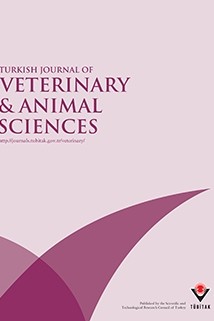
Turkish Journal of Veterinary and Animal Sciences
Yazarlar: Ayhan BAŞTAN, Selim ASLAN
Konular:-
Anahtar Kelimeler:Prolonged estrus,Treatment,Megestrol acetate,Dogs
Özet: A total of 22 dogs of different breeds with persistent estrus, between the ages of 1.5 and 6, were used. Diagnoses were made by anamnesis, general examination and vaginal smear. Vulvar edema, colour and volume of vaginal discharge, convolution of the mucosa and volume of secretion were recorded before and after treatment. Dogs were treated with 25 mg megestrol acetate (Niagestine, 25 mg/ml, Novo). Clinical manifestations disappeared within 3-7 days. Vaginal discharge ceased in 3.5±2.5 days and vulvar edema ceased in 3.5±1.6 days. In only one dog, the treatment was not effective after 15 days. The vulva was still swollen and vaginal cytologic features were consistent with estrus, and the dog was spayed. After ovariohysterectomy, 4 cystic structures were found on the right ovarium surface, and vaginal discharge ceased after 2 days. Endometritis occurred in only one dog within a years. Abnormal mammary growth did not occur. It was concluded that megestrol acetate can be used as an alternative treatment for dogs with persistent estrus.